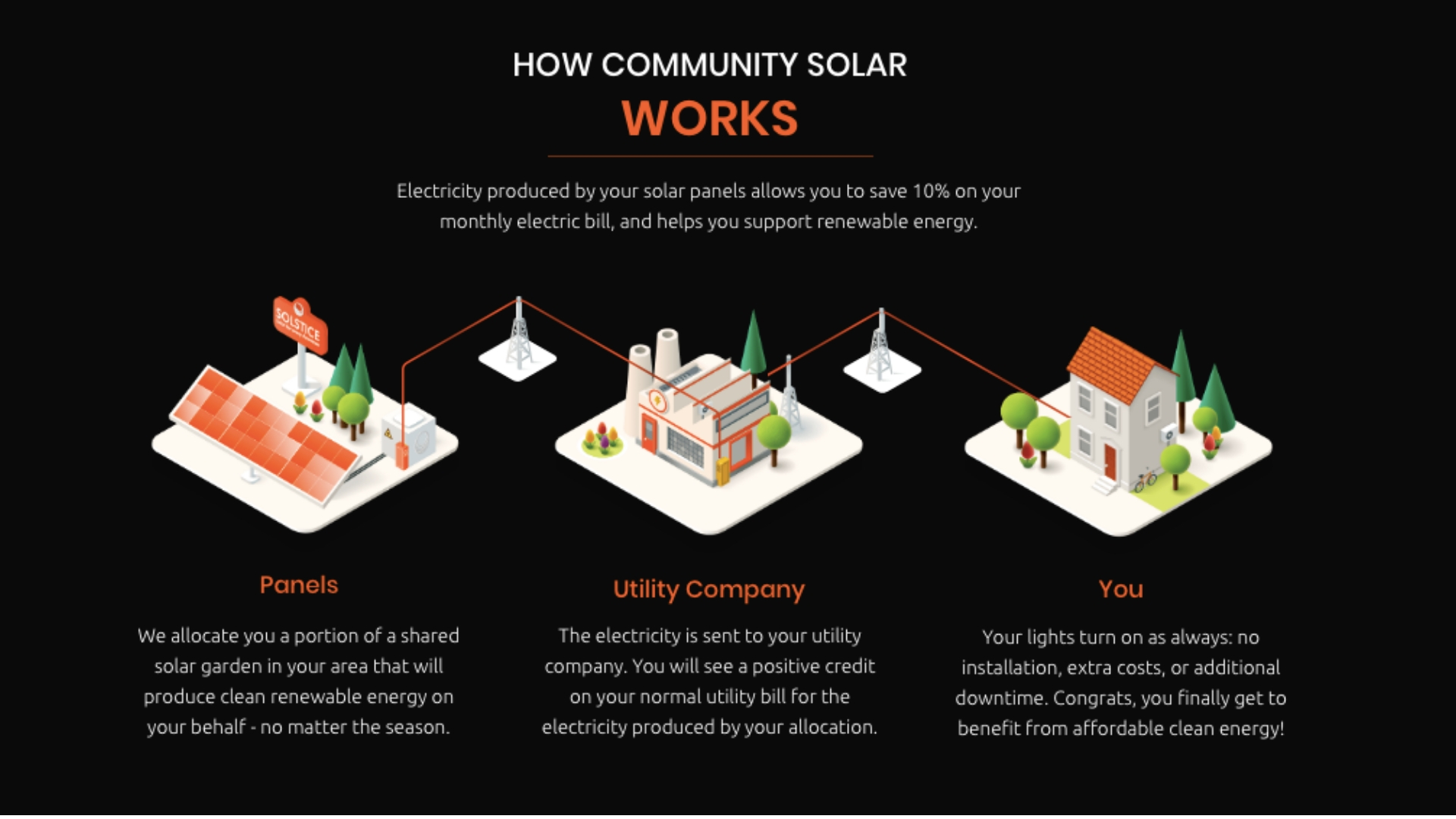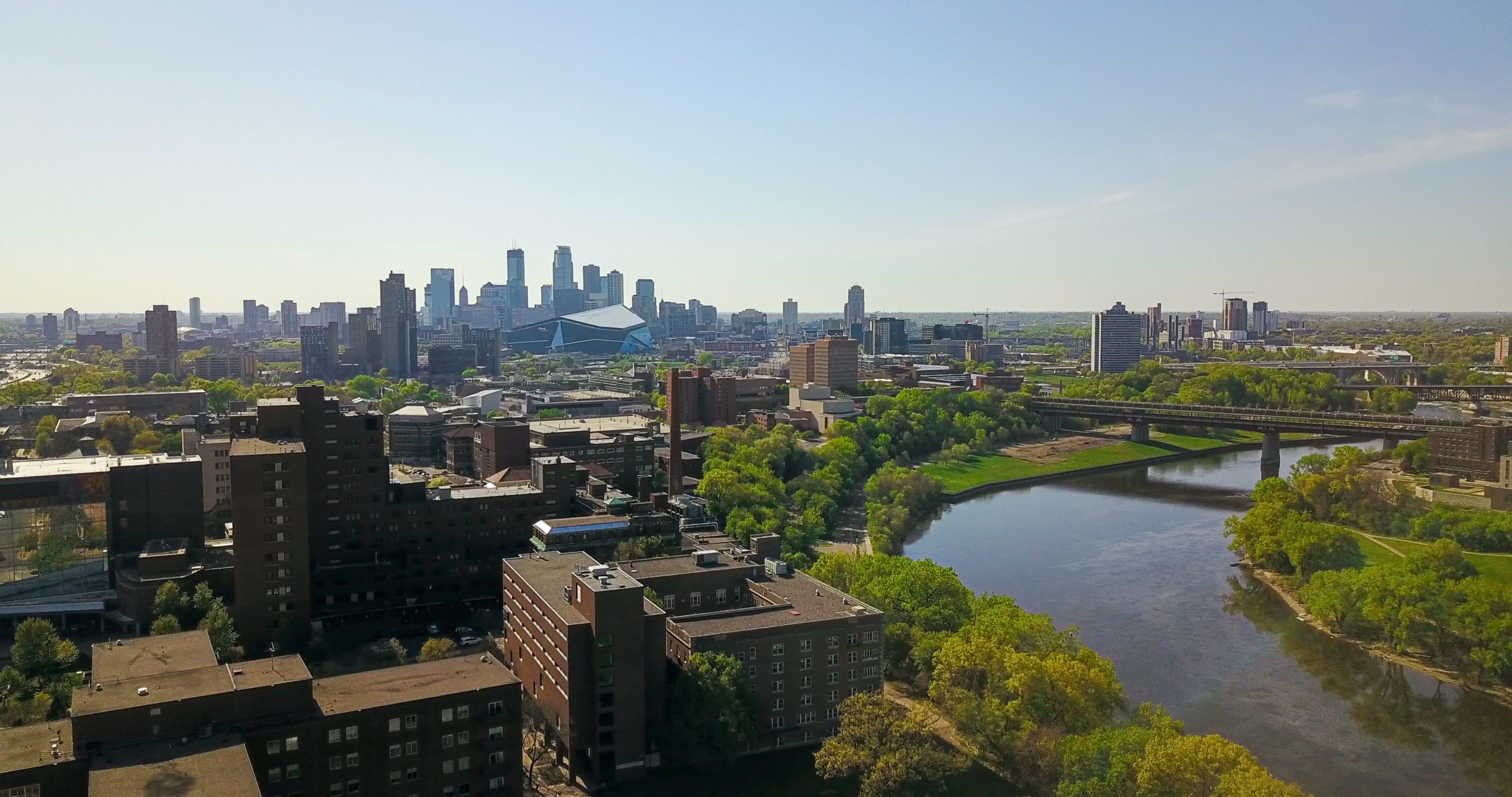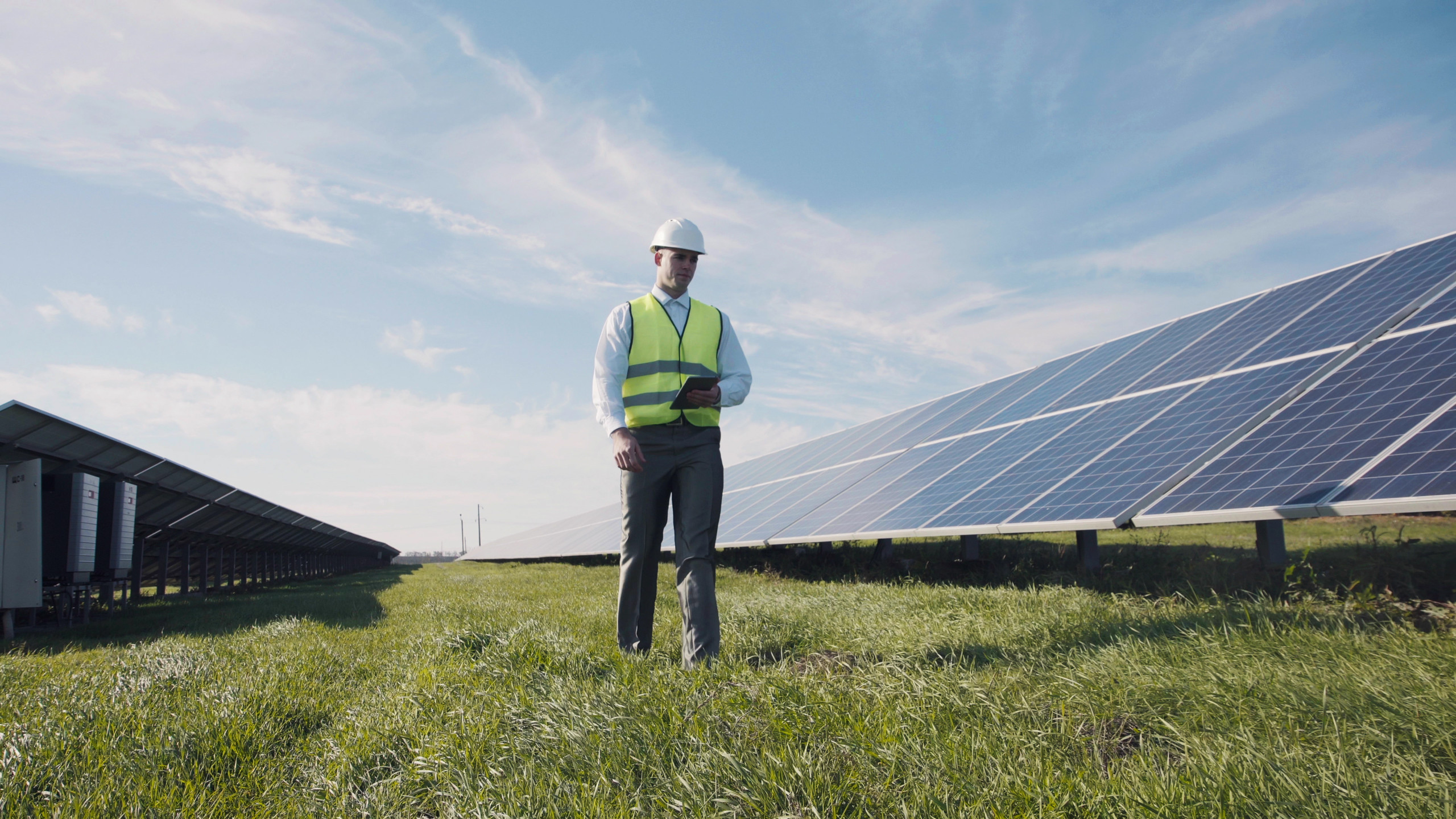Minnesota community solar is spreading throughout the state, giving schools, businesses, and households meaningful savings — and an equitable climate change solution.
There’s a common misconception about northern states and solar power. You guessed it — it’s that solar energy doesn’t work in areas that get frequent cloud coverage. But Minnesota community solar is proving that solar energy is not just a productive, economically viable energy source for northern states, but also a major money-saver.
Ever since Minnesota became the first state to pass legislation allowing folks to opt into community shared renewables in December 2014, the state’s community solar demand has skyrocketed. In fact, Minnesota has more community solar projects and capacity than any other U.S. state (393 projects and 794 megawatts as of April, 2021) and is expected to hit one gigawatt of community solar capacity (enough energy to power approximately 750,000 homes) as early as 2022!
Already, Minnesota community solar has helped hundreds of thousands of businesses, nonprofits, schools, municipalities, and residents add clean energy to the grid and save on their electricity bills.
The Community Solar Gardens Program allows Minnesota residents to opt in to a local solar farm. When customers choose to join, they are allocated a portion of their local solar farm that matches the energy their property uses, just like a rooftop solar installation would. This way, they avoid installing panels on their home.
As the state that pioneered a framework for community shared renewables, there’s a lot Minnesota can teach us about implementing clean energy systems that benefit us all. Here’s what makes Minnesota community solar unique and effective:
Table of Contents
Minnesota Community Solar: Putting Customers First
Minnesota’s community solar programs put the consumer first, and recognize that people save more when projects are smaller and more localized. By decreasing the distance energy has to travel, decentralized, local energy projects reduce energy supply and transmission costs. In essence, small-scale, more localized projects benefit the consumer. Minnesota’s Public Service Commission doubled down on their commitment to local engagement in 2015 when they determined that all community solar subscribers be located within the county or in the county next-door to the solar garden serving them. and recognize that people save more when projects are smaller and more localized. For this reason, Minnesota’s Public Service Commission declared in 2015 that all community solar gardens be located within the county or in the county next-door to the customers they serve.
Second, it’s designed to be economically viable, saving customers millions of dollars each year. As of 2018, Minnesota determines customers’ solar credit rates based on the value of solar, which benefits customers due to the declining trajectory of solar’s cost. We’ve reached a point in which solar energy is cheaper than fossil fuels, yet not everyone can access it. Minnesota, along with 19 other states, implemented community solar legislation to change that.
There are two necessary components to enabling community solar adoption in a state: interconnection rules, which require states to supplement the grid with solar, and virtual net-metering. The former (interconnection rules) were established for solar in Minnesota in January 2017, at which point Minnesota’s first full megawatt of community solar was installed.
Minnesota was the first state in the country to endorse net metering, which allows for rooftop solar by crediting customers for the energy they supply to the grid. Virtual net metering allows electric bill payers to choose to source their power from a shared energy source (usually some form of renewable energy) off their property, which supplies additional power to the grid. Minnesota is one of 20 states that has implemented this policy to make solar more accessible to those who cannot put solar on their homes.
The state’s initiative to adopt net metering in 1983 set the precedent for its commitment to provide affordable, accessible clean energy to its residents. However, it wasn’t until 2013, under the sway of the Clean Energy Jobs campaign, that the state instigated a real push for community solar: the Xcel Energy Community Solar Gardens (CSG) Program.
Minnesota Community Solar: How It Works
Here’s how it works: customers who enroll in community solar earn “solar credits” on their bills, giving them a discount every month. Picture rooftop solar: your solar panels produce energy, your utility gives you credits for that power, and you save money.
Community solar is similar, but in this case you get credits from your solar share nearby instead of your roof. It’s the solar developer’s and your utility’s way of giving back to the people who support clean energy.
Whether or not they join community solar, everyone in the community benefits from cleaner air and healthier people. Those who do sign up, however, generally save around 5-15% on their electricity bills. Community solar benefits the environment, communities, and residents’ wallets. Plus, renters and condo-owners can join! Anyone who pays a utility bill may be eligible to join community solar.

Minnesota Community Solar Brings Savings to Schools
Community solar has proven to be instrumental for Minnesota schools — particularly in terms of savings. After payroll, energy bills are the second biggest expense for Minnesota schools. With the savings from community solar, school districts are able to re-allocate funds previously spent on energy bills toward more important expenses — like paying their teachers and improving school programs.
Red Wing Public Schools in Minnesota is a premier case study that shows the benefits community solar can have on students, teachers, and the community. Red Wing generates up to 120% of its district’s energy usage through a 6 MW community solar garden on school property. 15,520 solar panels produce energy that is shared by the district’s six schools and the community. According to Clean Energy Resource Teams, the school district is projected to save $7.7 million in energy costs and earn $1 million in lease revenue over the next 25 years.
The Benefits Go to the Land and Landowners
In 2020, Minnesota implemented a statute that required all solar developers to implement pollinator habitats if they are able. It was the first state to adopt such a measure. Pollinator habitats contribute to the health and prosperity of local ecosystems and agriculture, and due to declining pollinator populations, creating habitats becomes all the more important (more on pollinator-friendly solar here!).
The statute also outlines strict requirements a project must follow to claim that the solar project is “pollinator-friendly,” which include reporting the site’s management practices to the Board of Water and soil resources, making the report accessible to the public, and, of course, providing food and habitat for bees, butterflies, hummingbirds, and other pollinators.
Landowners in Minnesota also love community solar for its revenue-generating potential. Minnesota community solar currently provides $5 million in annual revenue to landowners who host solar panels on their properties. Taking into account all the projects that are currently under construction, the ISLR predicts that “about 354 landowners will receive a total of $182 million in leases and royalties over the next 25 years.”
Community Solar Is a Win For Minnesota
Community solar is the largest solar deployment in the state of Minnesota — and with no cap on expanding community solar project development, Minnesota community solar has limitless potential. With the state’s people-centric foundation, Minnesota community solar will continue to spread the benefits of solar to more Minnesotans — and we can’t wait to watch it grow!
Like learning about community solar?
Join our monthly newsletter to hear about more renewable energy news and bold climate challenges.



